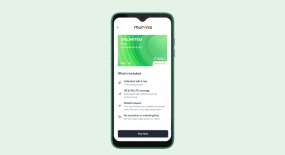There is a trap waiting for CSPs while many are already bogged down in it. Several publications and industry pundits are on the case, but the discussion must be moved to the forefront. Billing, charging and pricing professionals need to lift their heads above the parapet to spot it.
We must stop charging for ‘data.’ In fact, we must get beyond even discussing ‘data.’
Why?
The first reason is that the majority of people still don’t really understand ‘data.’ Sure, more and more people are becoming savvy but it is still a long way from being the norm. The second reason is that if we sell ‘data’ a price war is almost inevitable, because ‘it’ will become a commodity.
Universally, CSPs understand that voice and texts are now commodities. Many are, logically, focusing on data to bring the value back into their propositions. But offering data bundles and buckets are nebulous. Do you, does anyone, actually know how many megabytes a video uses, or even location based services? A positive answer is generally in the minority. Latest example – the average customer won’t cop to the fact that, for example, their data bundle is going to be used faster with Facebook now auto-playing videos.
This lack of understanding will cause CSPs to go down one of two roads. Either they will scramble to increase the capacity of their networks and offer their customers ‘more for less’ and thus provide a service where customers feel comfortable that they will not hit their data limit.
Or they will strive to deliver differentiated services. Or better – differentiated products.
If you talk to the service and product design people within larger CSPs, they certainly understand the problem. And they are beginning to launch examples that prove this. They also understand that partnering is a critical part of delivering value based products to customers. A key question for the industry is whether partnering is the only solution or whether CSPs are able to deliver products without partners.
The answer is both.
Home Security is an obvious example for communications providers and often used in examples. But is security a service or a product?
The ability to alert a customer that a light bulb has popped or that he has left the oven on, or that the police are on their way to a break in would probably be described as a service. Sell a few small, matt black boxes, with a comforting, blinking light on the front, or even the Smartphone app equivalent, and you provide the same service, but you have a product.
Examples are emerging across many different industries, and the opportunities are huge for CSPs. Whether they will need to partner to deliver products to, say, the health sector, will depend on their in-house expertise and the type of product. The same can be said of utilities or the car industry, where AT&T has now announced that customers can add a car to their shared data plan.
Other partners have products that customers already understand and love. Facebook, WhatsApp, Google and the rest are now entering partnerships with CSPs. The service providers get more ‘data’ revenue, customers get clarity and value – they can buy, for instance, 10 YouTube sessions and 100 Facebook sessions for a set and certain price, and the partners get real-time customer insights into usage patterns and billing expertise.
Brands are doing the same, sponsoring data so that customers know, for example, that reviewing films on Amazon does not cost them anything or use up that data bucket that they instinctively believe is about to run out.
Netflix, Spotify, Sky Sports…don’t sell the data for customers to use them at seemingly arbitrary limits but instead sell them as included and use real-time intelligence and action with the providers of these services as a three-way partnership.
The value this real-time end-to-end ecosystem can bring to all parties is endless and can ultimately move to negate the concept of ‘data’ usage.
The opportunities that data delivers and partners provide are huge, but what customers ultimately buy are – and must be – products. Otherwise, we will be pushed down a dead end street and end up in a price war in which there can be no winners.
This article was originally published in Matrixx's Blog.




















